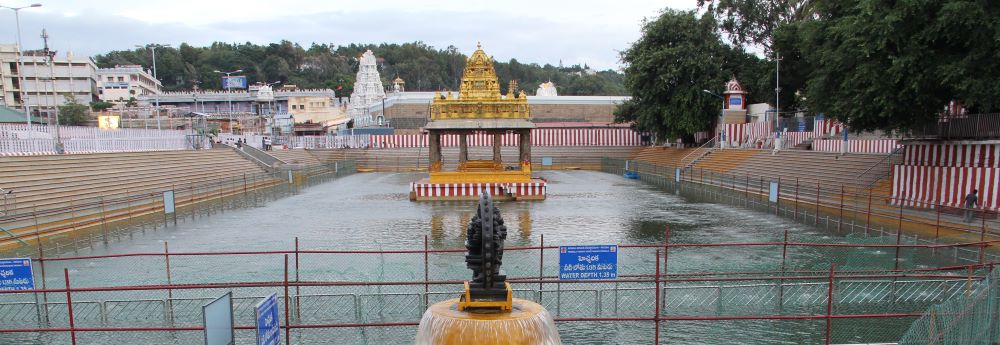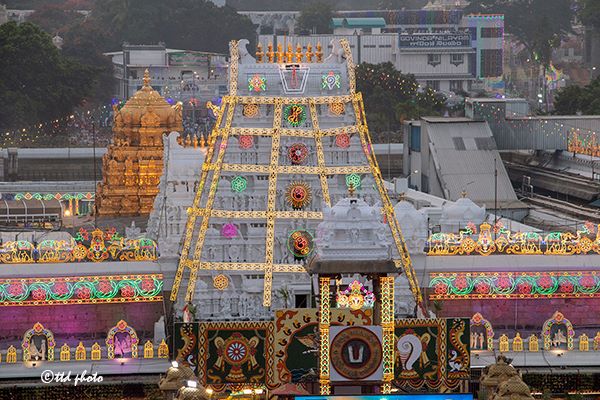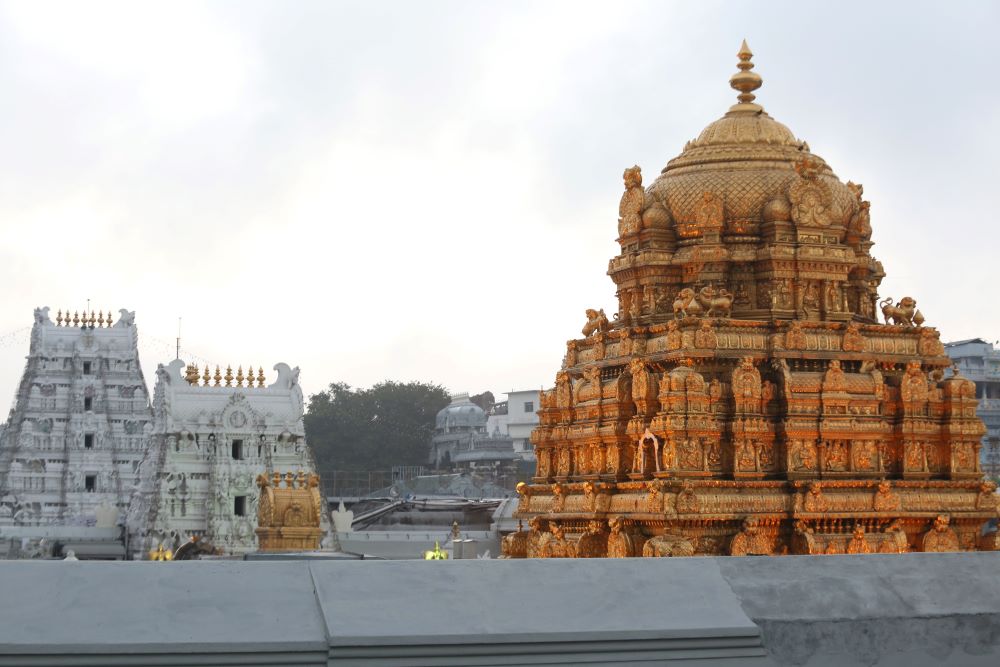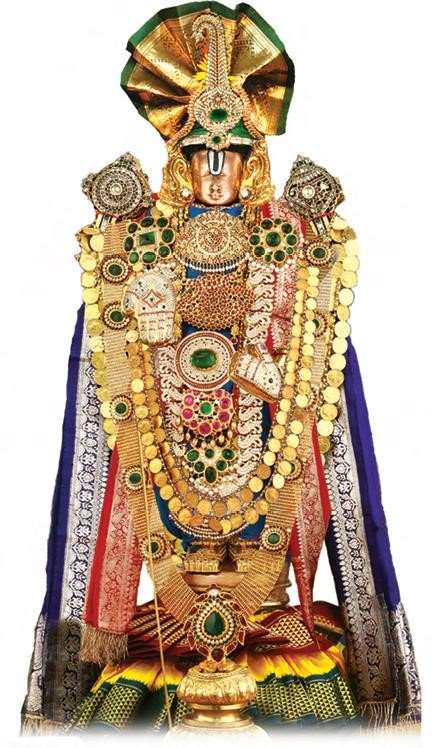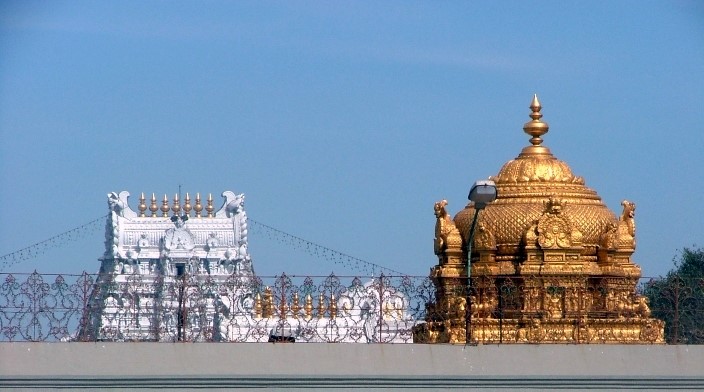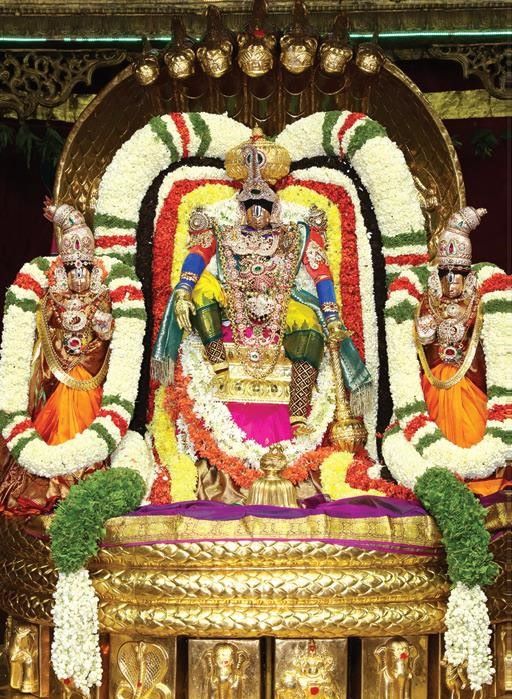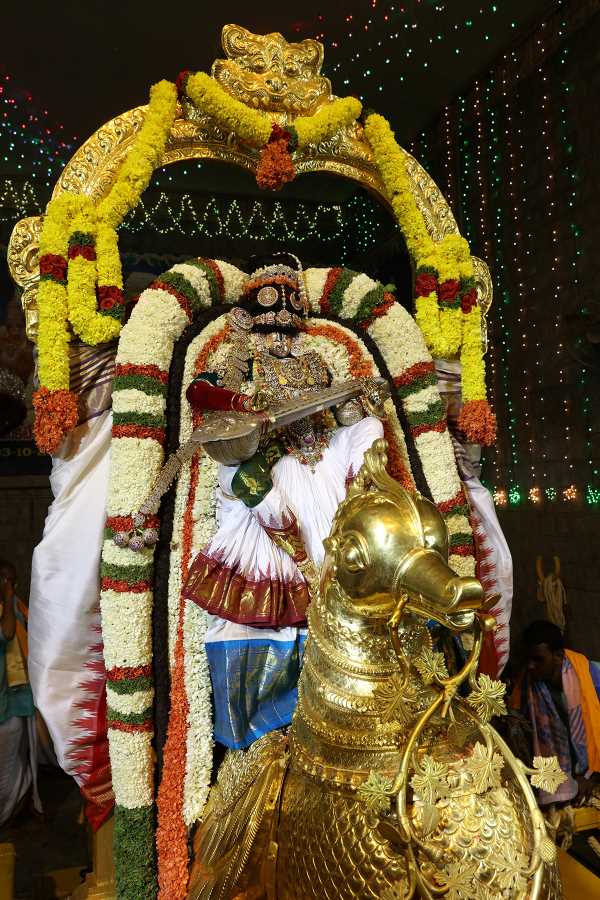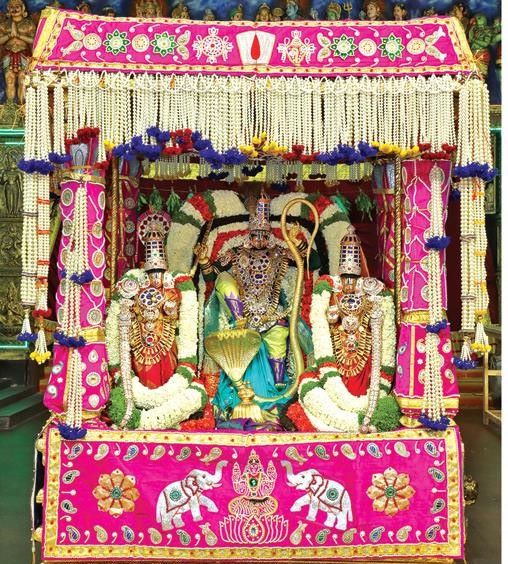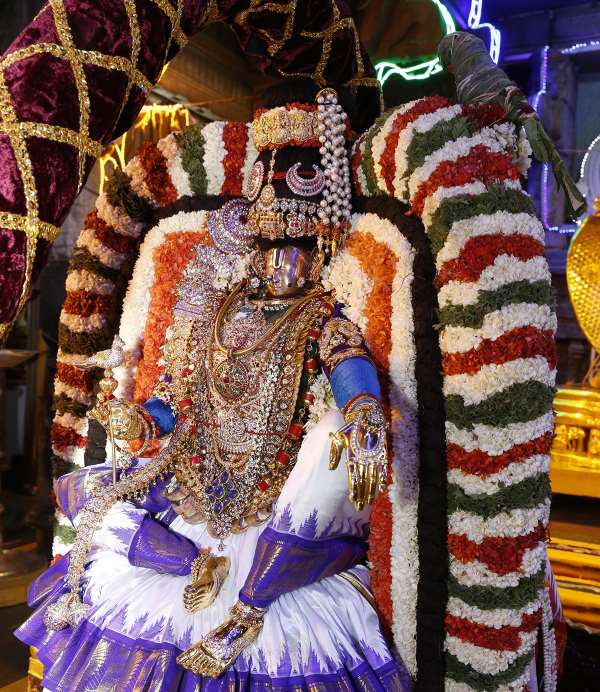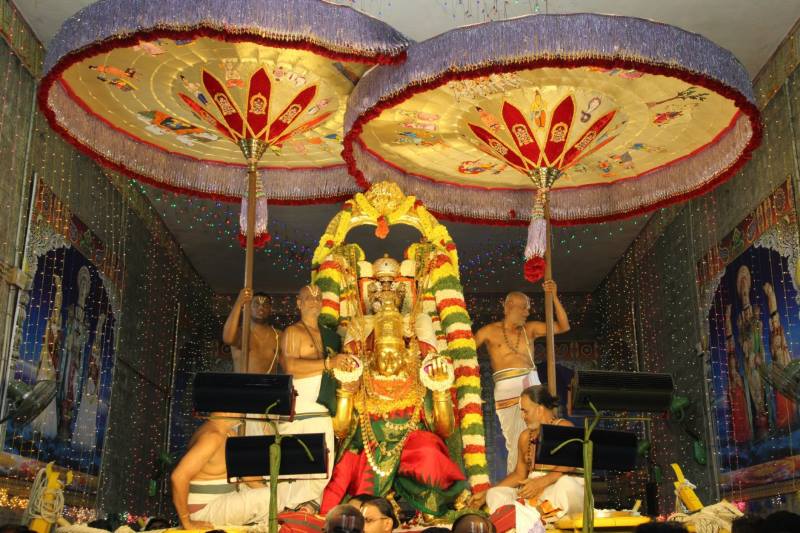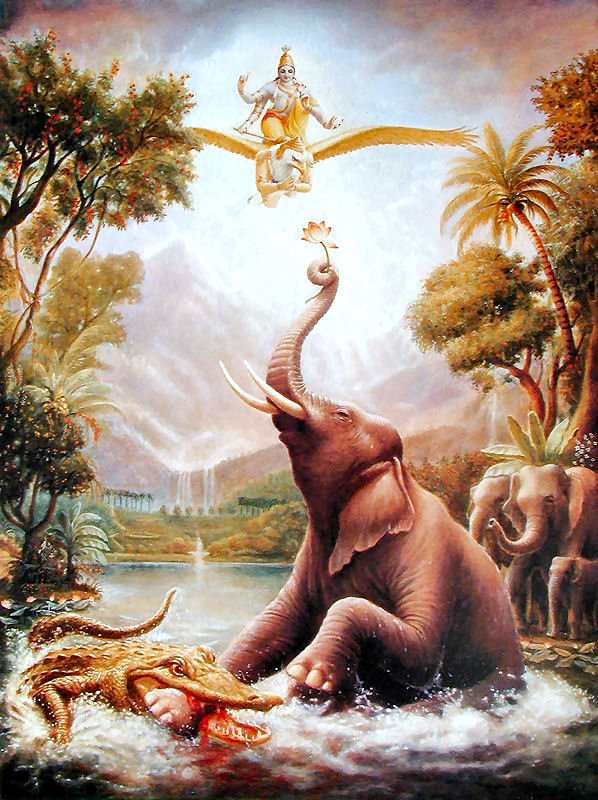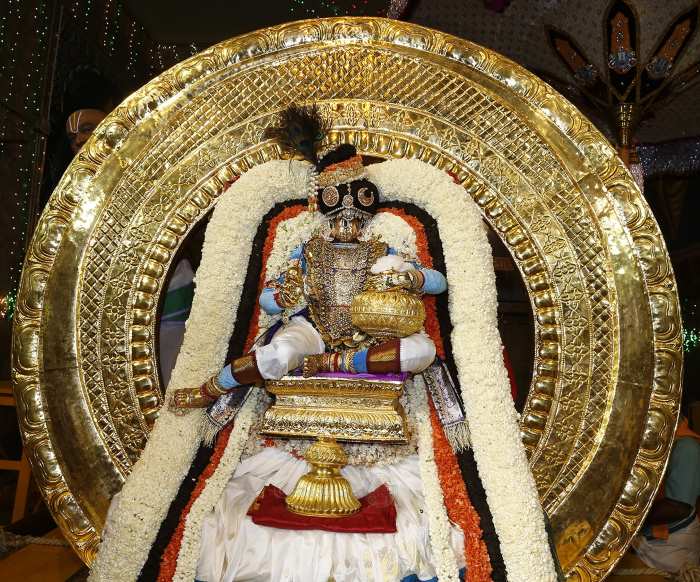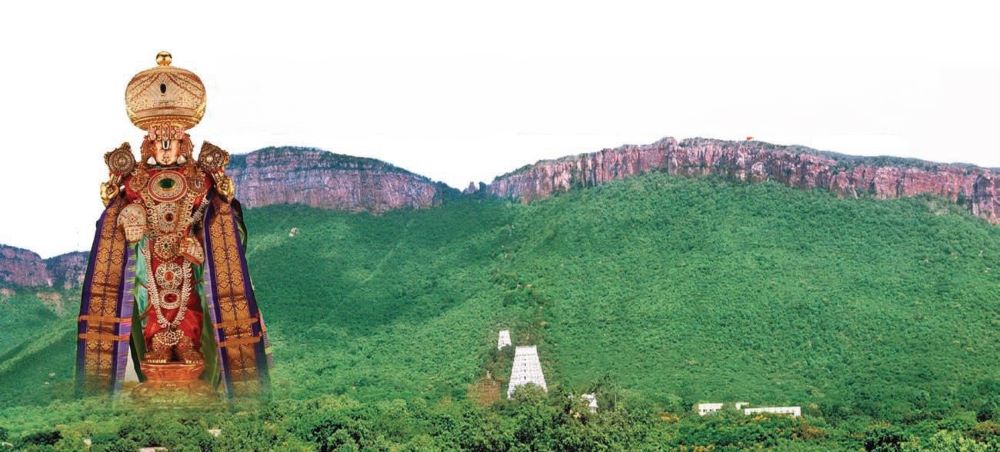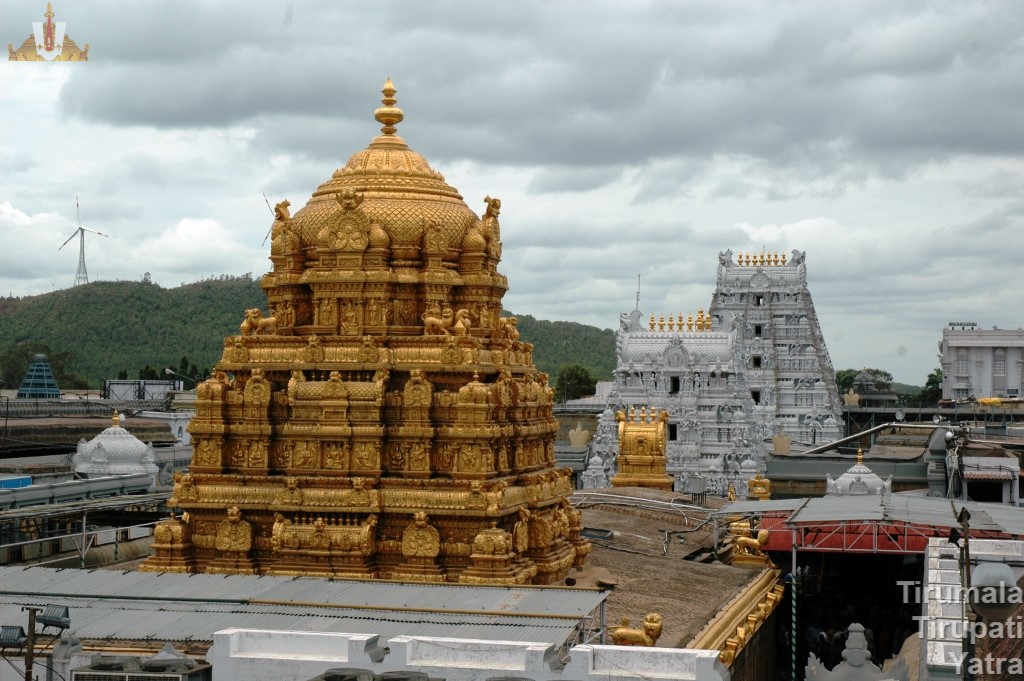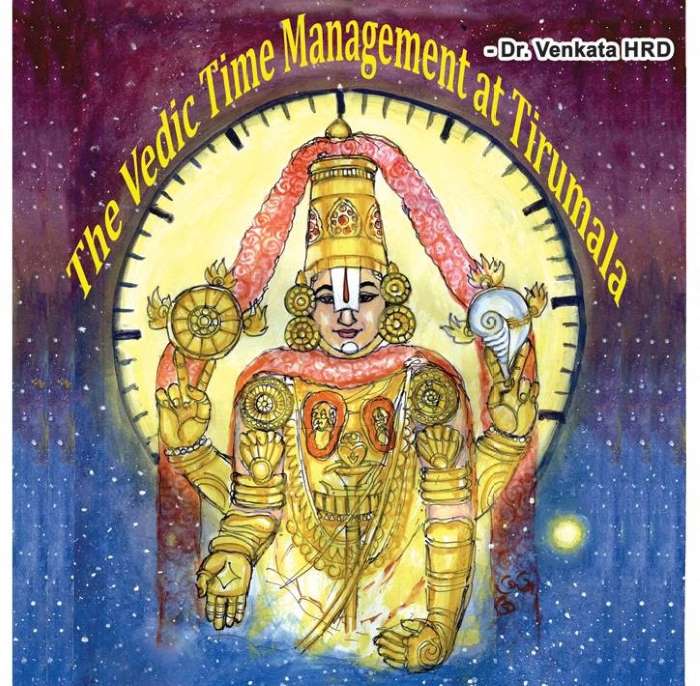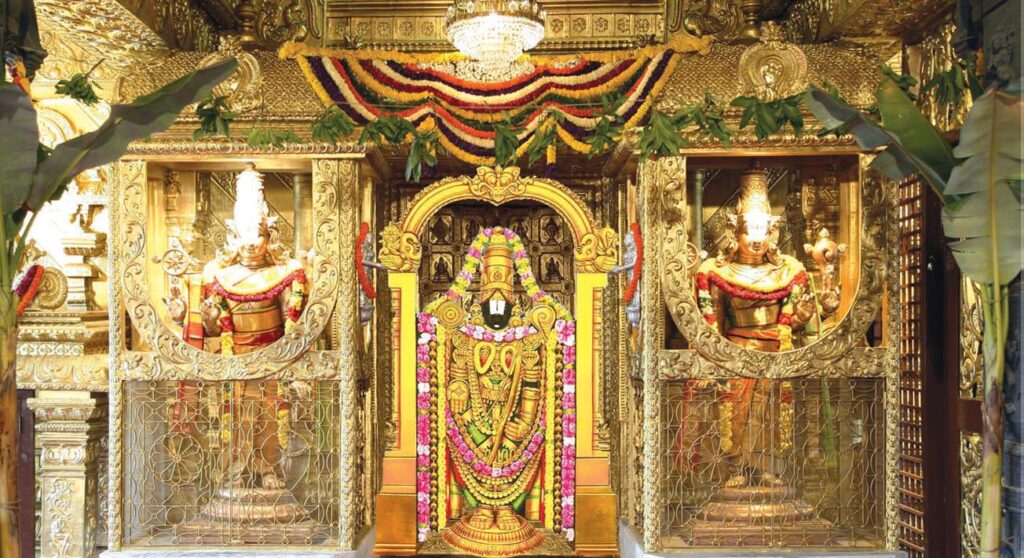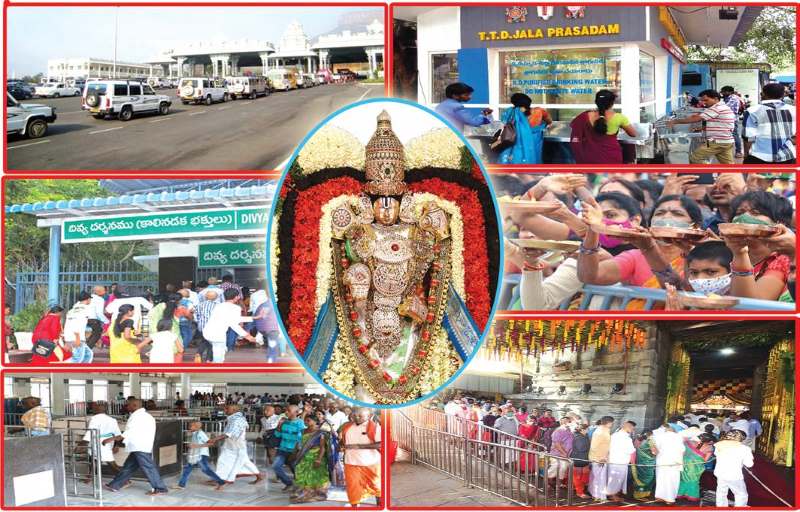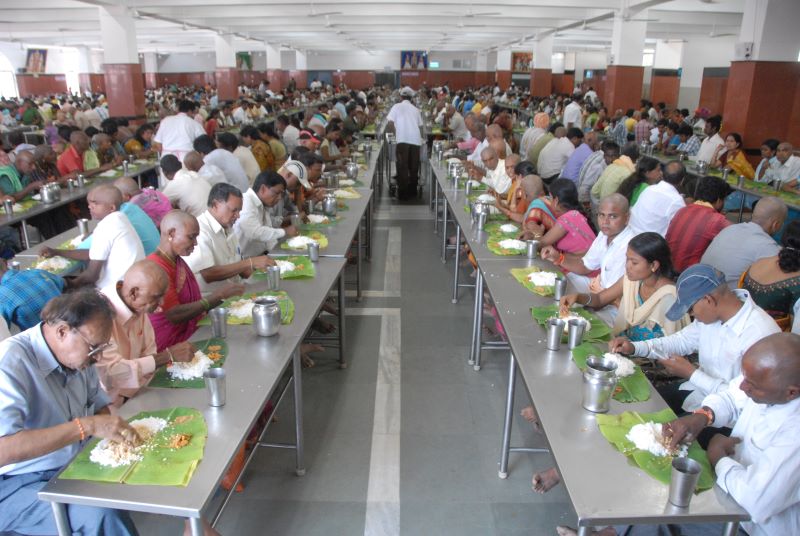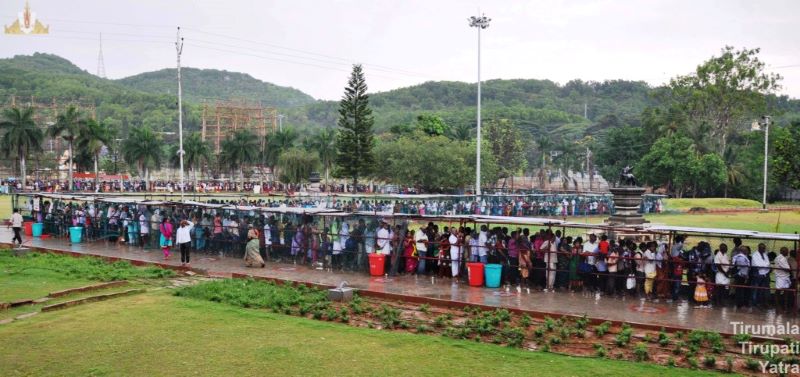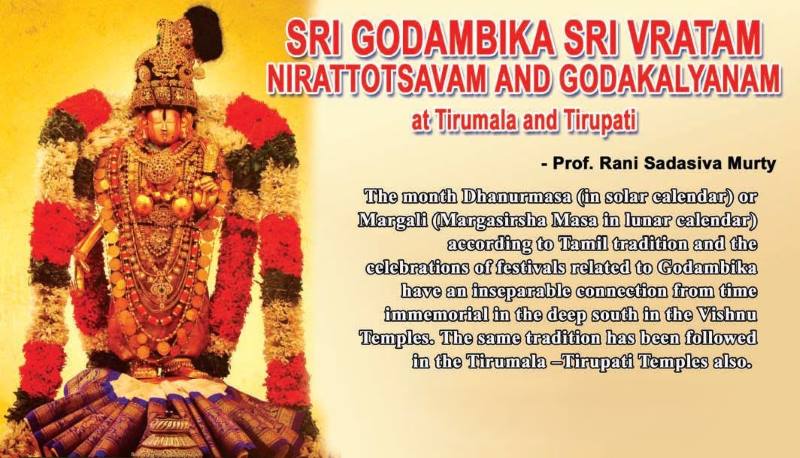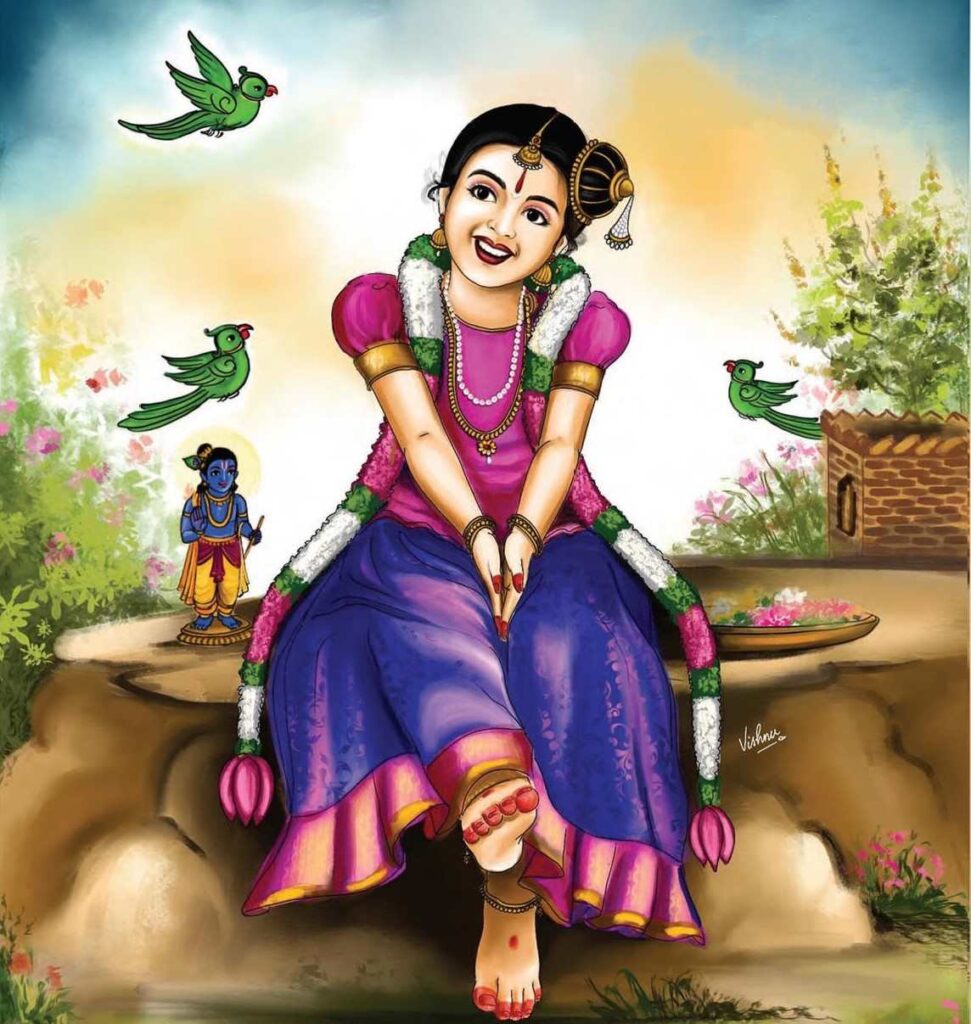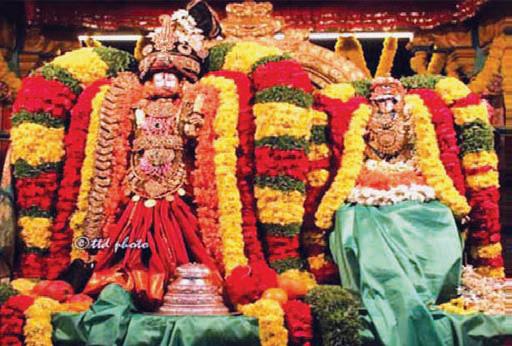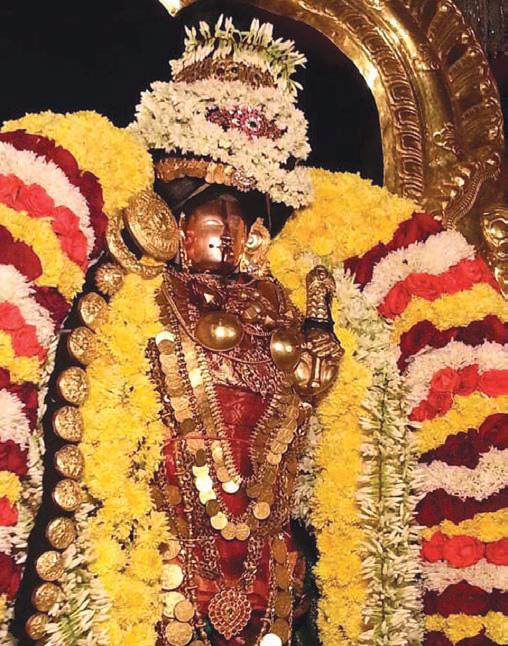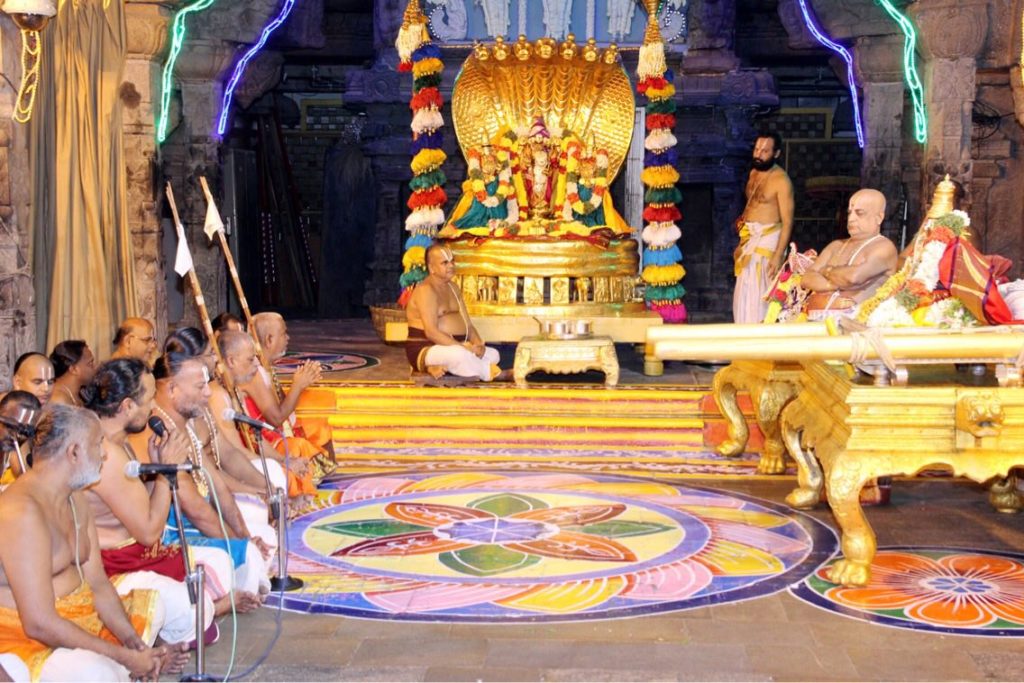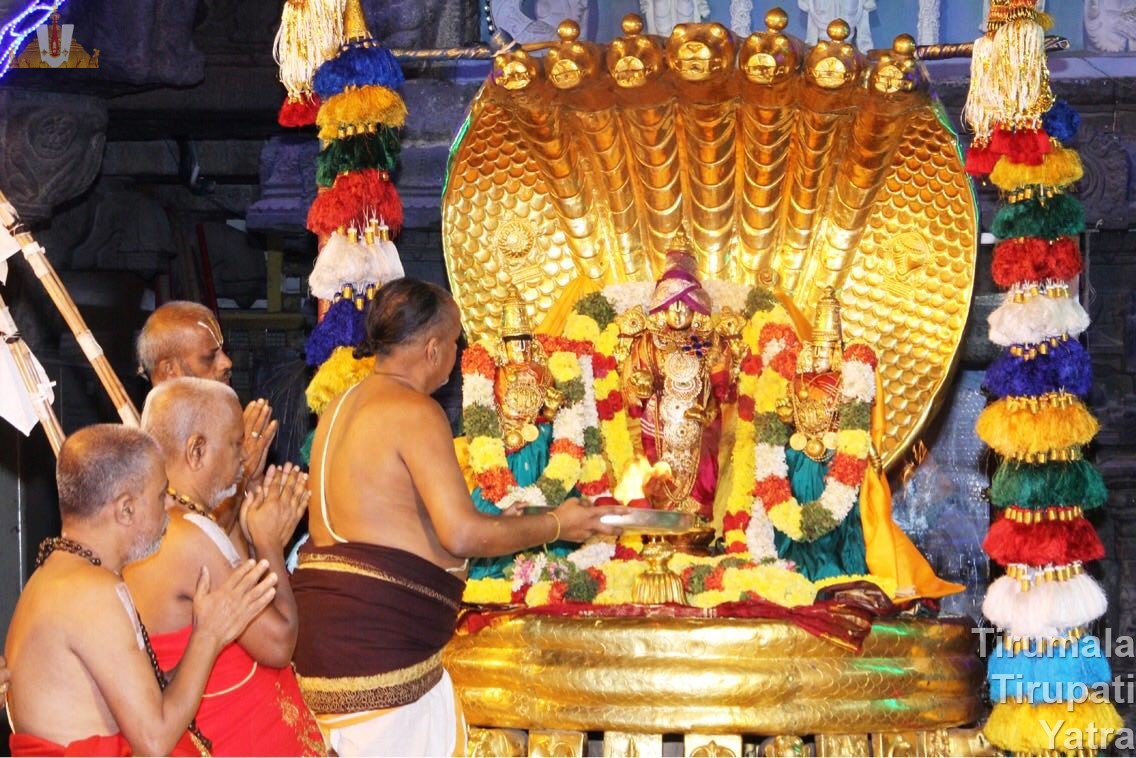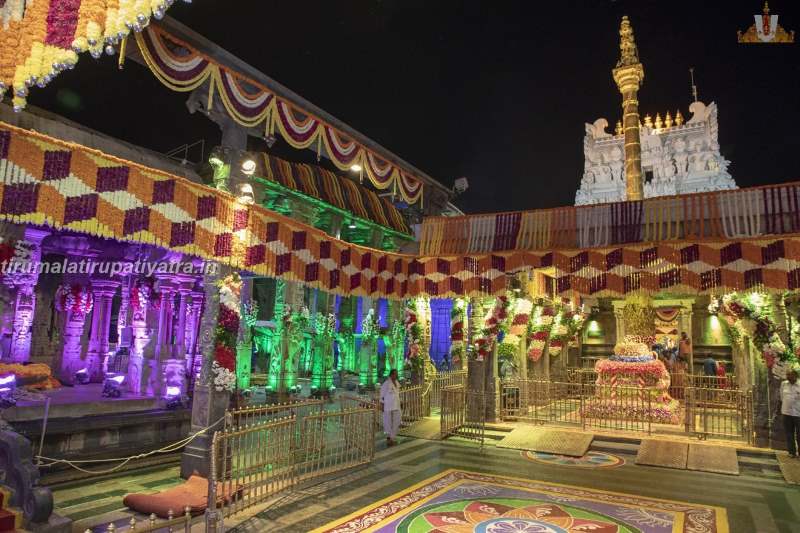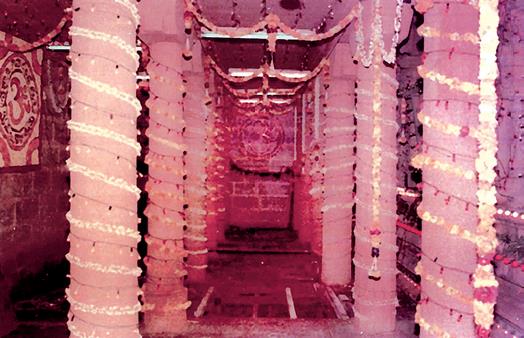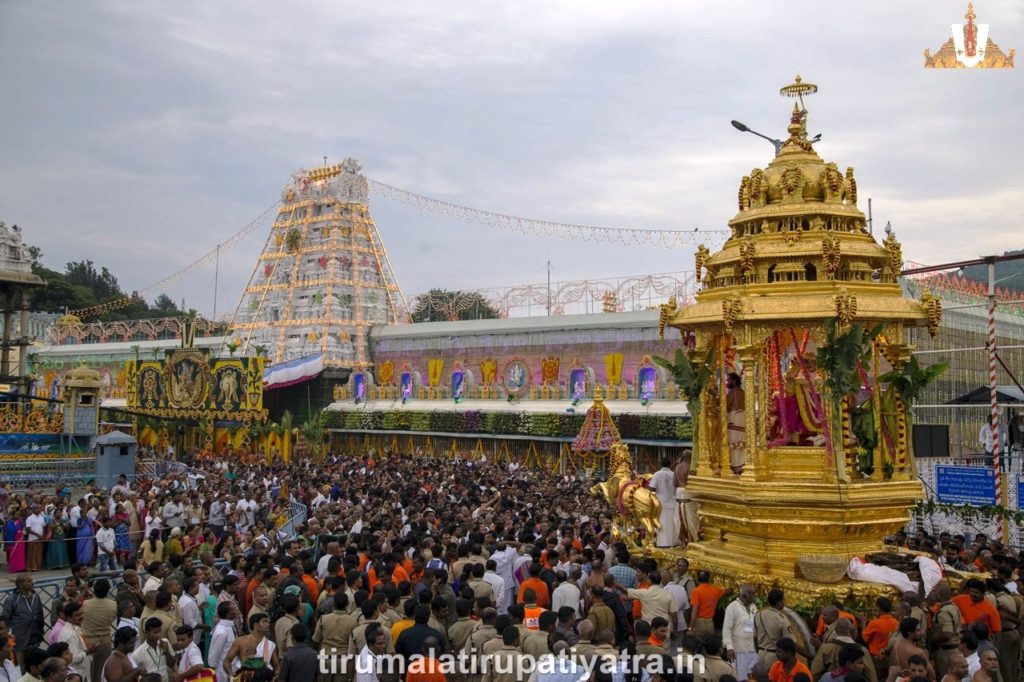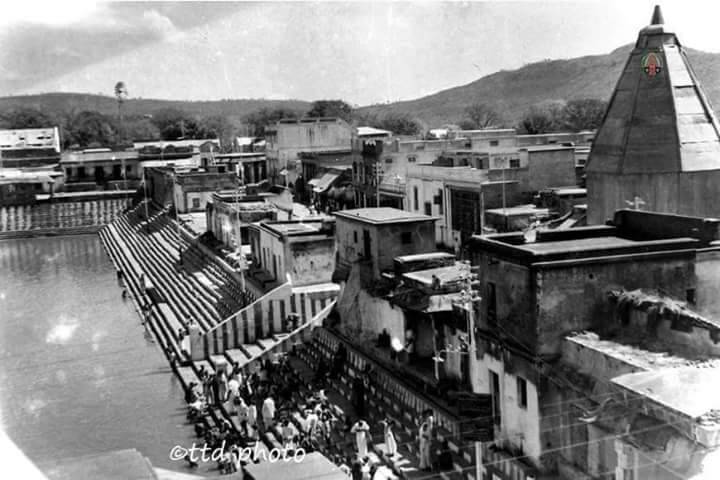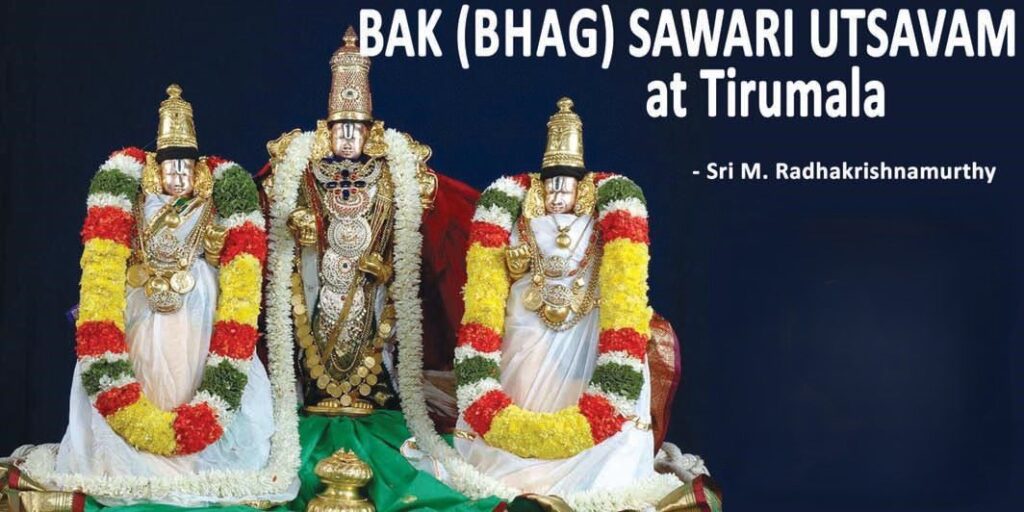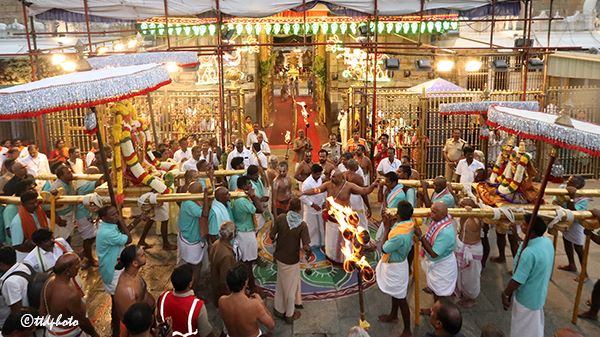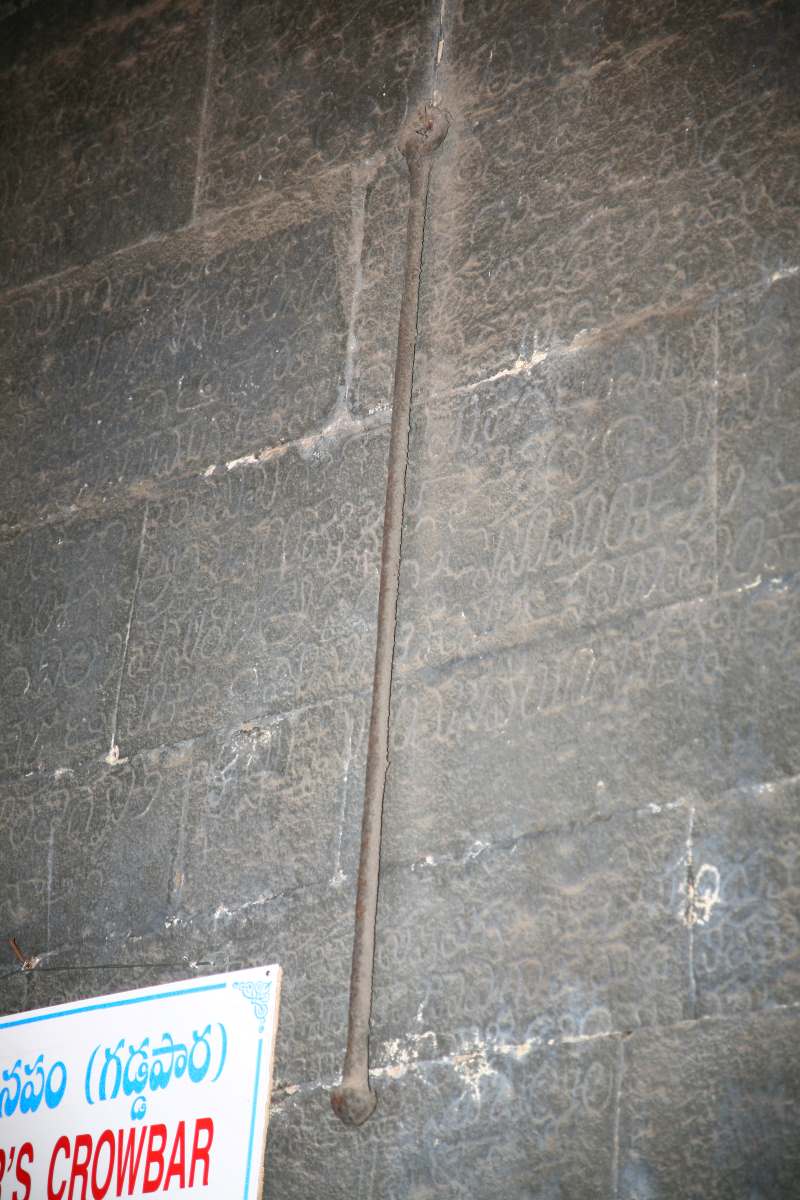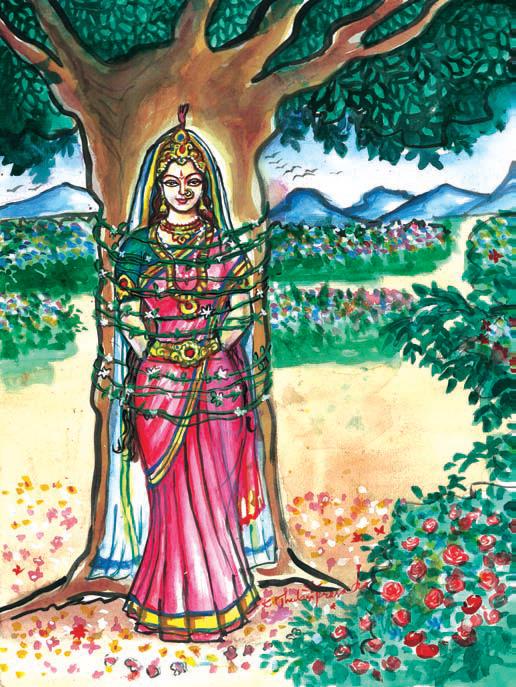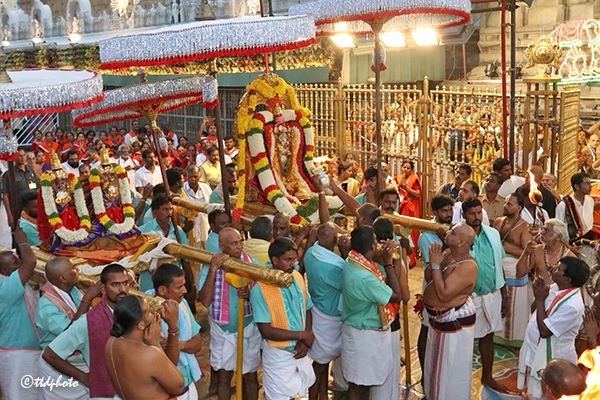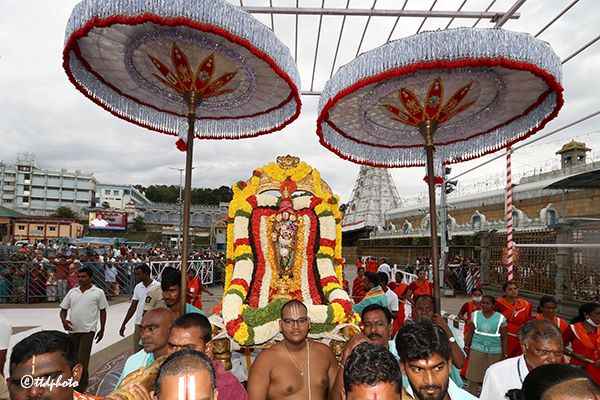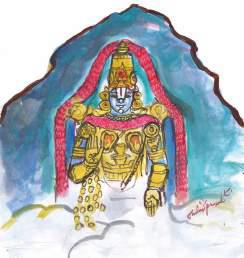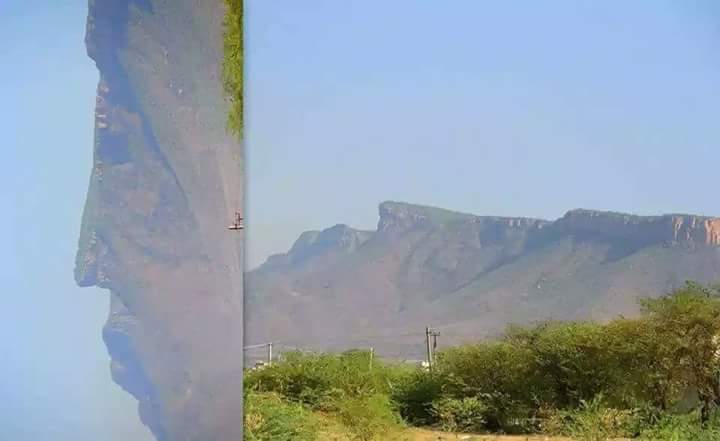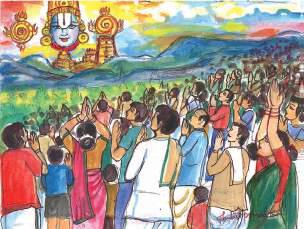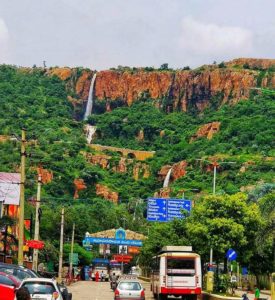Origin of Swami Pushkarini
Generally, the term Pushkarini refers to a Theertha Thataakam (Bigger water pond) and Swami Pushkarini is nothing but jala roopam of the Kali Yuga daivam, ‘The Lord Srinivasa’ Himself. That is the Greatness of Swami Pushkarini of Tirumala Hills.
We can list out various facts about Swami Pushkarini from various Puranas, history and hearsay.
The first and foremost acceptable fact among them is thus – as already mentioned above in the beginning — Swami Pushkarini is part and parcel of the Vrajaa nadhi (Holy river) which remains under the Holy feet of the Lord Sriman Narayana at Sri Vaikuntam, also known as Parama Padham, a part brought to Adhi Varaha Kshethram by Garudaalwar at the command of Lord Venakatachalapathy, for His jalakreeda purpose with Goddess Padmavathi Ammavaru.
That is why it is also called as KONERI (kon means Swami, Eri means lake or Pushkarini).
Triveni Sangamam
As we all know that ‘Triveni Sangamam’ is the cluster of (joining of) three rivers namely Ganga, Yamuna and Saraswathi, but in that place where they join, only two rivers are visible to viewers viz. Ganga and Yamuna. River Saraswathi is not at all visible, as she is flowing underneath the two rivers as Antharwahini (flowing deep down below).
So, Goddess Saraswathi prayed to Lord Srinivasa to overcome this difficulty, and finally Lord gave her a boon saying that hereafter, Goddess Saraswathi can settle herself in the Swami Pushkarini itself in the river form visible to human eyes and also be known as Saraswathi Pushkarini along with the name Swami Pushkarini.
In the 11th century, King Saluva Narasimharaya constructed and developed the Pushkarini tank in such a manner useful for taking bath by the yathrikas before going into the temple for Srivari dharshan.
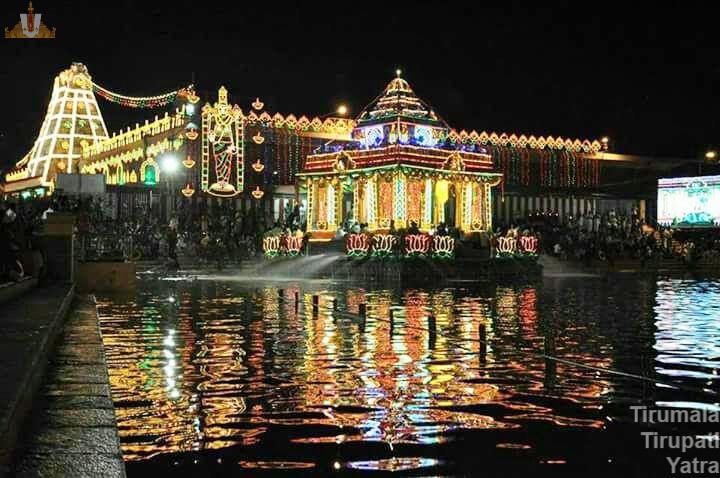
The Northern part of Pushkarini which is near Adhi Varahaswami temple is called as ‘Varaha Pushkarini’ and the part of Pushkarini near Srivari temple side is called as ‘Swami Pushkarini’.
In the centre of the Pushkarini, we find a huge “Neerazhi Mandapam” used during the Teppotsavam festival times. Malayappa swami is taken in procession in the four Mada Veethees, as ‘Veethi Prathakshanam during festival times, surrounding the Swami Pushkarini. Swami Pushkarini is situated in one and a half acre land area.
click here for the Swami Pushkarini location on Google Maps
Beliefs about Swami Pushkarini
Those who do snana (bath) in Swami Pushkarini, will get relief from their Paapa karmas (sins) and they will be given a warm welcome in the punya Lokha when they leave this world.
A prasthaavanam about Swami Pushkarini is found in the Sri Venkateswara Sahasranamam thus: “Swami Theertha Nivaasaaya Namaha” He who does Sandhya Vandhanam even at least one time in the Pushkarini is considered as Maha Thapaswi and he gets Moksha at the end of life.
108 Divya Theerthams
108 Divya Theerthams join in this Swami Pushkarini as Antharwahini. Aakaash Ganga, Paapa vinasam, Jaapaali, Sesha Theertham, etc, to name a few. Saptha Rishis, viz. Athri, Bruhu, Kuthsa, Vasihta, Gouthama, Kasyapa, Aangeerasa Rishis, regularly do the ritual of taking a dip in the Pushkarini before entering the Srivari temple for dharshan.
Muppatthu mukkoti devathaas (33 crore devathaas) take pride in having a dip in the Pushkarini, before swami Darshan.
Sloka 14
Sloka 14 of Sri Venkateswara Suprabhatham says,
“Sri Swami Pushkarini -kaaplava-nirmalaangaa:
Sreyo Arthino-hara Virinja-sanandhanaadhyaa:
Dwaare Vasanthi-varavetha -hathotha Mangaa:
Sri Venkatachalapathey -thava suprabhatham.”
The meaning of this slokha is that even the so-called dignitaries in the Deva Lokham, like Brahma and Shiva come down to earth to take a bath in Swami Pushkarini to clean their celestial body and purify themselves before entering the swami temple for darshan and getting His mercy and favour.
Sri Sudarsana Alwar
During festival times, like
- Vaikunta Dwadasi,
- Rathasapthami,
- Padmanabha vratham,
- Kaisika dwadasi,
Sri Sudarsana Alwar is taken for Snanam (sacred bath) in the Varaha Pushkarini on behalf of the main deity.
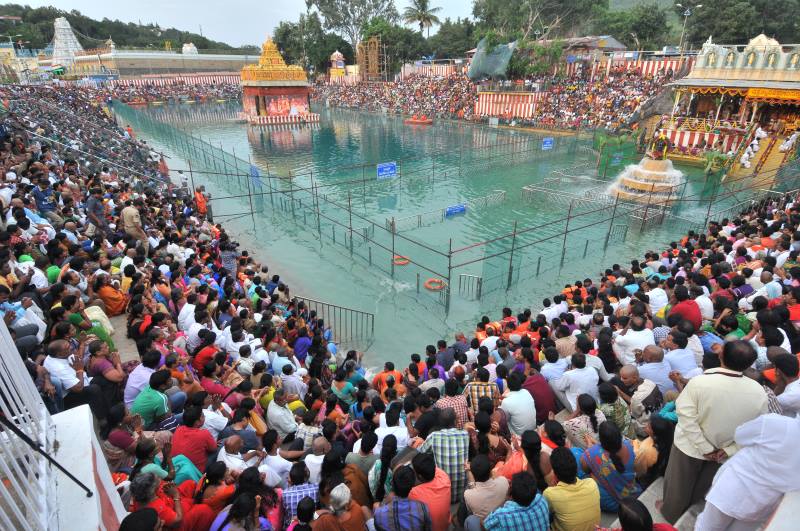
An interesting anecdote
One time, the veteran Upanyasakar (commentator) came to Tirumala for Srivari darshan and he was doing the Sandhya Vandhanam ritual in the Swami Pushkarini.
At that time a layman took a dip in the Pushkarini saying GOINDA, GOINDA repeatedly. The wrong Utterance of the fine holy word GOVINDA, as GOINDA by the layman, perplexed Swamiji very much. He thought of correcting the layman by calling him nearer.
At that moment a surprising thing happened. The layman was raising his hands above the head in the direction of Lord Venkatesa, and started uttering the following words.
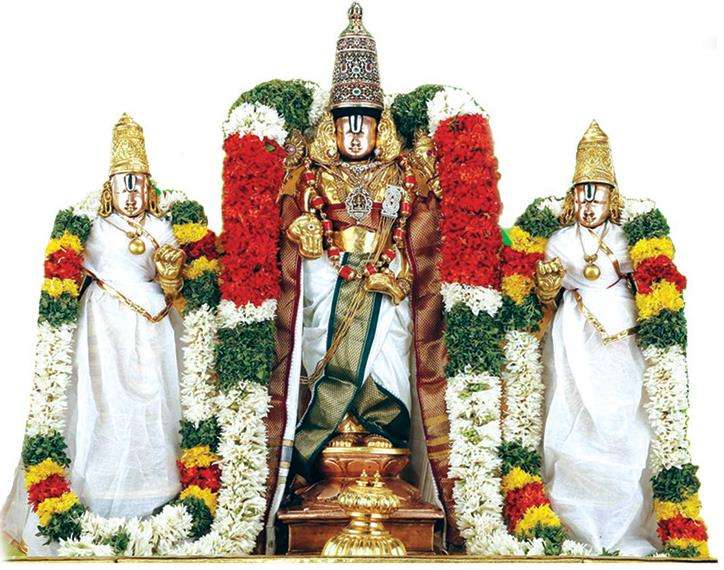
“O, Lord, Venkateswara! Last year also I came here and called you ‘GOINDA’ and as a Prati Upakaaraa, you are kind enough to bring me here this year also to have a bath in the Pushkarini and to have a nice dharshan of you! What a kind of name you have! I cannot explain in words”.
The moment Swamiji heard these words of the layman, felt ashamed of his thought of calling him near for correcting his words. He thought for a while, “When the Lord himself likes the layman calling Him “GOINDA”, who am I to correct it as GOVINDA?”
Procedure for swami darshan
There is a prescribed procedure laid down in shashtras to be followed by everyone, Whoever comes to Tirumala for Srivari darshan, should first take a bath in Swami Pushkarini and then visit the Adhi Varaha swami temple, only then they should try to get into the temple for Swami darshan.
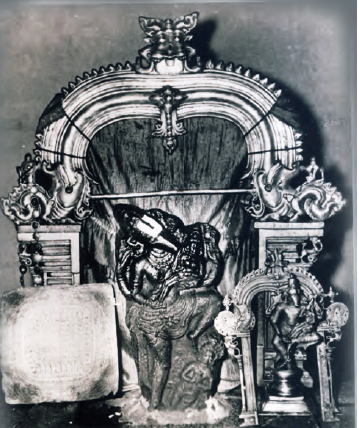
But nowadays devotees do not adhere to this strict procedure as they are afraid that they will miss the main Lord’s darshan if they follow the procedures either because of heavy rush or because of their heavy schedule.
Among Alwars, Kulasekhara Alwar’s mention of Swami Pushkarini is apt and worth noting here. In his Perumal Thirumozhi Prabhandam, Alwar mentions Swami Pushkarini as “ Koneri” and wishes that it would be nice and worthy for him to take birth in the Thiruvekatamudayan’s hill, at least as a stork bird in the Koneri Theertha Thataakam.
The devotees to the Tirumala Hills are advised to come prepared to stay on Tirumala Hills to have Swami Darshan as per the procedures laid down in the shashtras as well as by God Himself.
